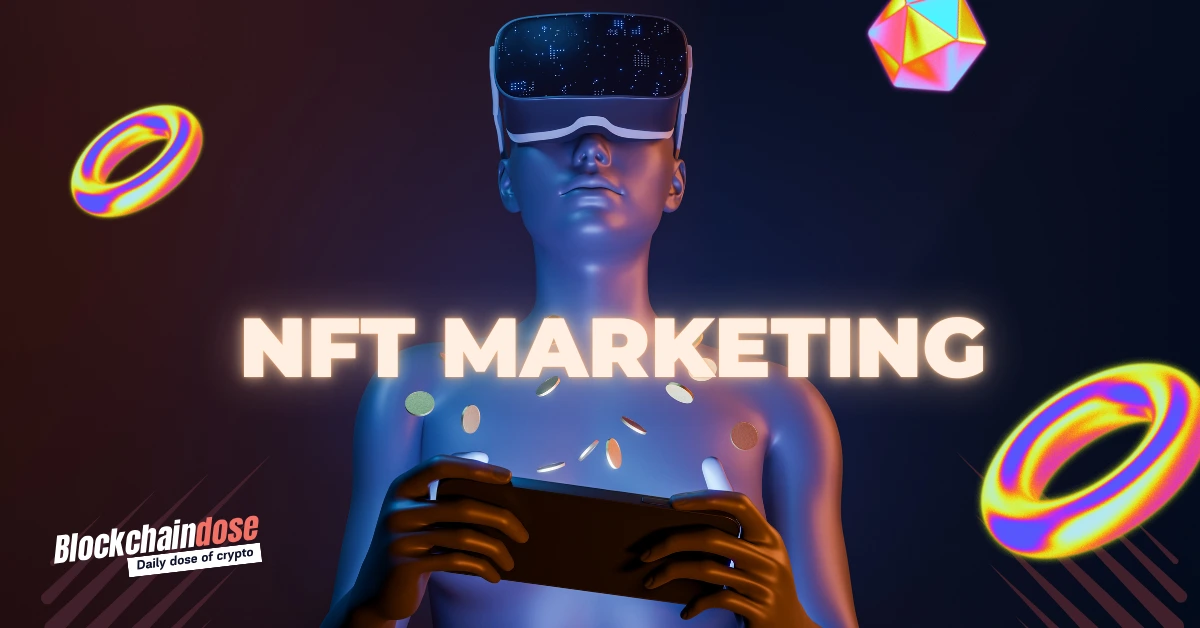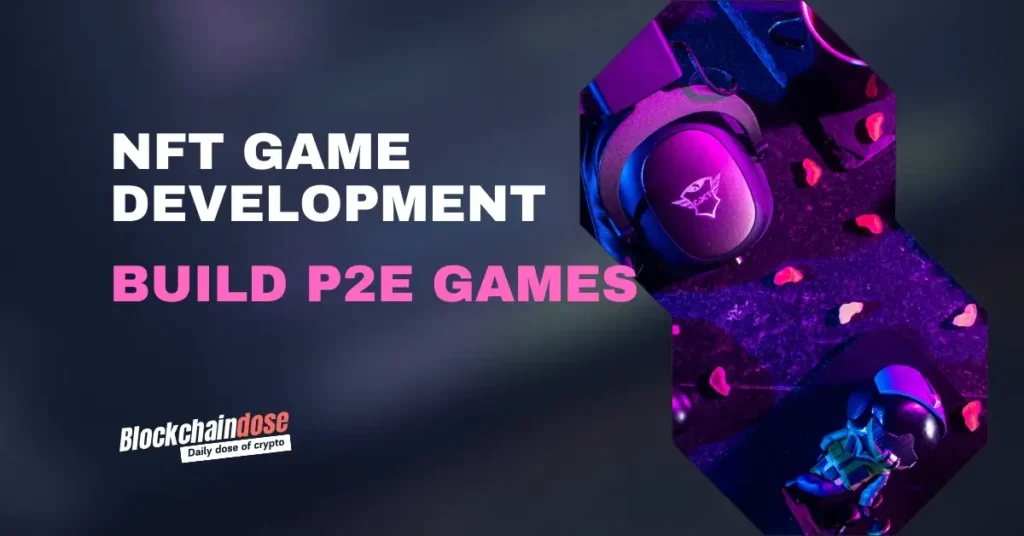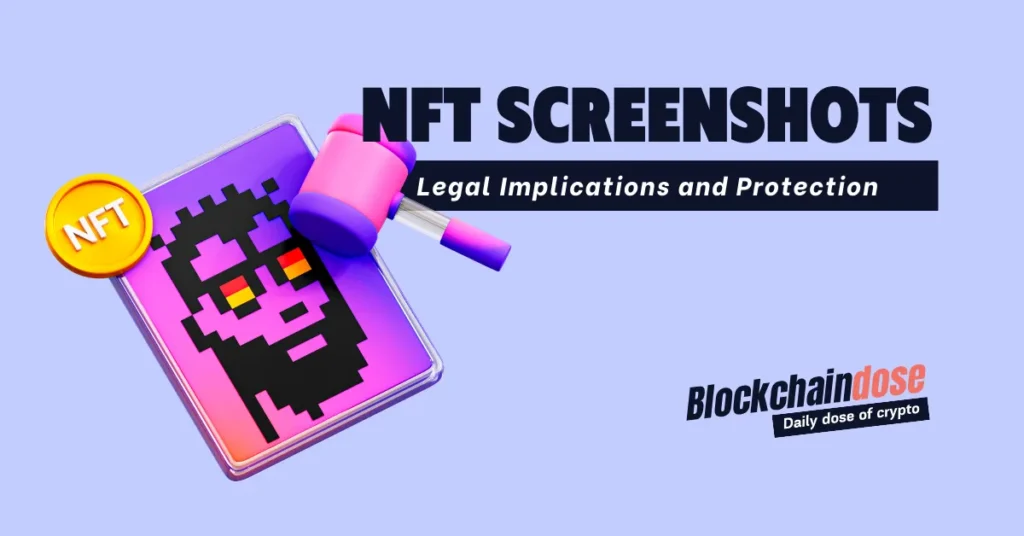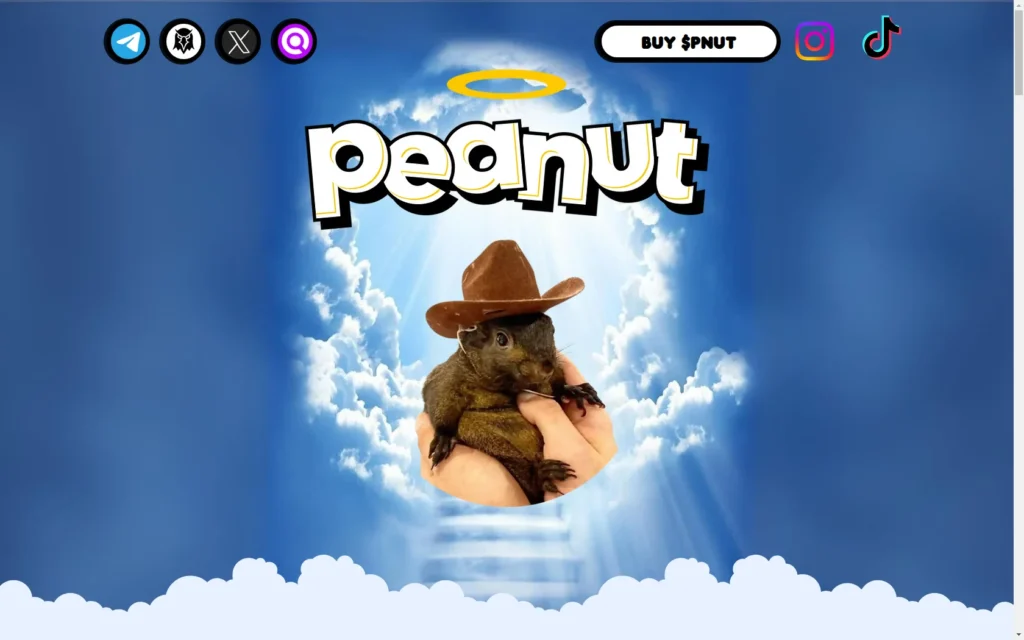NFT marketing is all about promoting unique digital assets, like one-of-a-kind digital art or collectibles, and getting people excited to buy, sell, or own them online. Imagine you created a cool digital picture. NFT marketing helps you showcase it and find potential buyers. In this article, we’ll explore what NFT marketing is, how to do NFT marketing and touch on how much NFT marketing can cost to give you a full understanding of this growing field. The growth in this field is staggering – global NFT marketing spending was estimated at $1.8 billion in 2021 and is projected to reach $6.8 billion by 2026, growing at a CAGR of 30.5%.
In the world of non-fungible tokens (NFTs), marketing plays a crucial role. It’s not just about creating digital art or collectibles; you also need to spread the word so people know they exist. NFT marketing involves using social media, online ads, and other tools to act like a digital art dealer and promoter rolled into one.
The Basics of NFT Marketing
Getting started with NFT marketing isn’t as daunting as it might seem. First, you need to know where NFT enthusiasts hang out online. Platforms like Twitter, Discord, and specialized NFT websites are hotspots for the NFT community. Share your NFT project in these spaces and engage with people interested in buying or supporting your work.
One key aspect of NFT marketing is storytelling. People love knowing the story behind the art, especially in the digital realm. Tell people why you created your NFT and what makes it unique. This helps build a connection with potential buyers. In the NFT world, your story can be just as valuable as the digital asset itself.
Building an NFT community is also important. This means regularly interacting with your fans and followers. Share updates, ask for opinions, and involve your audience in your creative process. When people feel involved, they are more likely to support your NFTs. It’s like having a group of friends excited about your success.
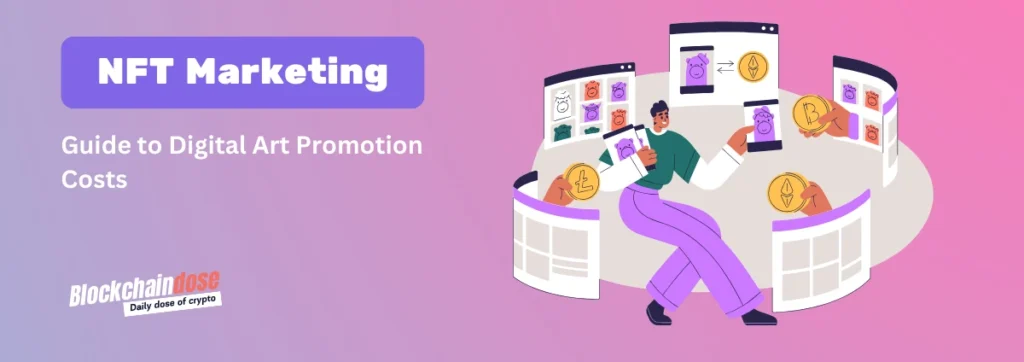
NFT Marketing Strategies: Crafting Your Approach
There is no one-size-fits-all approach to NFT marketing.
Here are some key NFT marketing strategies:
- Create Buzz: Build excitement through limited releases, collaborations, or exclusive perks for early buyers.
- Develop a Roadmap: Outline future drops, exclusive events, or perks tied to your NFTs. This gives buyers a reason to stay engaged long-term.
- Leverage Social Proof: Share testimonials from buyers or get endorsements from influencers in the NFT space. This builds credibility and trust.
The Role of NFT Marketing Services
As the NFT market grows, so does the demand for specialized NFT marketing services. These services can include social media management, full-scale marketing campaigns, and public relations. They offer expertise on how to promote your NFT project effectively, from creating content to engaging with your community.
When choosing a service, make sure they understand the nuances of the NFT world, including blockchain technology, NFT marketplaces, and community culture. A good marketing service can help you navigate the technicalities while ensuring your creative vision shines through.
Navigating NFT Marketing Agencies
For more comprehensive support, consider working with an NFT marketing agency. These agencies specialize in promoting NFT projects, often offering a wide range of services:
- Market research
- Brand development
- Community management
- Technical support for launching NFTs
Choosing the right agency means looking for one with a proven track record. Ask for case studies and results from past projects to ensure they align with your goals. Few examples or well-known marketing agencies are CryptoVirally, Coinbound or NinjaPromo.
Check out our list of Top 10 NFT Marketing Agencies.
NFT Development and Marketing: The Intersection
While marketing is essential, strong NFT development forms the foundation of any successful project. This includes creating digital assets, smart contracts, and infrastructure for minting and selling NFTs. Highlighting the technical quality of your project—like security features or innovative smart contracts—can serve as a strong marketing point.
Don’t hesitate to share the technical details of your project, like the blockchain you’re using or the minting process. Many NFT buyers appreciate understanding the technology behind their purchases.
NFT Game Development: A Growing Niche
NFT game development is rapidly expanding, with NFTs being used as in-game items, characters, or part of the game’s economy. When promoting NFT games, focus on how NFTs enhance the player’s experience—like true ownership of in-game assets or the ability to trade them. Community engagement plays a critical role, so fostering spaces where players can connect and share strategies is key.
NFT Marketplace Development: Creating New Spaces
As the NFT market grows, demand for new NFT marketplaces is rising. These platforms enable users to buy, sell, and trade NFTs, often focusing on specific niches. If you’re developing an NFT marketplace, your marketing should highlight what makes your platform unique—whether it’s lower fees, user-friendly interfaces, or specialized features.
Trust is critical when marketing a marketplace. Emphasize security, transparency, and fraud prevention measures to attract both buyers and sellers.
The Costs of NFT Marketing: Budgeting for Success
How much does NFT marketing cost? It varies widely. Some creators do it for free, using social media and engaging with communities. Others spend thousands on ads or hire marketing professionals.
Here’s a breakdown:
- Free Options: Use social media platforms like Twitter or Discord.
- Paid Options: Invest in targeted ads or comprehensive marketing services, ranging from a few hundred to several thousand dollars.
Start small, test different strategies, and scale your marketing as your project grows.
Creating Buzz: The Heart of NFT Marketing
At its core, NFT marketing is about creating excitement. Tease new NFT releases, collaborate with other artists, or offer special perks to early buyers. Limited releases or exclusive drops can create a sense of urgency and desirability.
Also, clarify what buyers will get. Is it just a digital image, or does the NFT come with additional benefits like access to exclusive events or future discounts? The more value you offer, the more attractive your NFTs become.
Understanding Your Audience
Knowing your audience is crucial for effective marketing. Are you targeting crypto enthusiasts or art collectors? Understanding your audience helps you tailor your messaging and find the right platforms for promotion.
Stay updated on NFT trends. The NFT world changes fast, and adjusting your strategy to reflect current trends can keep your project relevant and appealing.
The Role of Social Media
Social media is essential for NFT marketing. Platforms like Twitter, Instagram, and Discord are where NFT fans discover new projects. Consistency is key. Regularly post about your NFTs, share behind-the-scenes content, and engage with your audience.
The impact of social media on NFT marketing has been explosive – Twitter mentions of NFTs increased by 3,000% in 2021 compared to 2020, while Instagram posts with the #NFT hashtag grew from 300,000 in January 2021 to over 11 million by December 2021.
Building relationships is as important as selling. Join discussions, respond to comments, and be part of the broader NFT community.
Technical Aspects of NFT Marketing
Understanding the technical side of NFTs, like blockchain technology, crypto wallets, and minting, helps you market more effectively. Be transparent about gas fees and other costs to build trust with buyers.
Choosing the right marketplace for your NFTs is also essential. Some platforms are more user-friendly, while others offer a larger audience. Research different platforms to find the best fit.
Building Partnerships in the NFT World
Partnerships can expand your reach. Collaborate with artists, influencers, or brands to create something exciting and reach new audiences. Good partnerships benefit everyone involved and can help your NFTs stand out in a crowded market.
The Importance of Timing in NFT Marketing
Timing can make a big difference. Launch your NFT project when there’s less competition or tie it to a relevant trend or event. Build up anticipation by teasing your project beforehand through sneak peeks or countdowns.
Understand when your audience is most active to maximize engagement. Timing isn’t just about the release—it’s also about how you engage with your community and share updates.
Measuring Success
To know if your NFT marketing is working, track key metrics like:
- Floor price: The lowest price your NFTs are selling for.
- Sales volume: The total number of sales over time.
- Engagement: Social media likes, shares, and comments.
Long-term success comes from building a loyal community and establishing a strong reputation. Track follower growth, community engagement, and overall impact to measure progress.
Adapting to Changes in the NFT Market
The NFT world changes quickly. Stay flexible and adjust your strategy as needed. Stay informed by following NFT news and joining discussions. Diversifying your marketing channels helps you stay adaptable and avoid relying too much on any one platform.
Stay true to your vision while exploring new ways to connect with your audience and showcase your work.
Conclusion
As NFTs evolve, so will NFT marketing. We might see more virtual reality integration, with NFTs becoming part of immersive experiences. Utility will also play a bigger role, with more NFTs offering real-world benefits or exclusive content.
The investment in NFT marketing by major platforms underscores its importance. For instance, OpenSea’s marketing budget increased from $2 million in 2020 to $20 million in 2021, while Rarible spent $5 million on marketing in 2021, up from $800,000 in 2020.
In conclusion, mastering NFT marketing involves creativity, community building, and staying adaptable. Whether you’re just starting or planning your next big project, understanding these principles is key to long-term success.
FAQ
NFT marketing is the promotion of unique digital assets to generate interest and sales. It involves showcasing your digital creations and finding potential buyers.
The best strategy often involves a mix of social media engagement, storytelling, community building, and leveraging partnerships. Tailor your approach to your specific audience and NFT project.
Costs can range from free (using organic social media) to thousands of dollars for professional services. OpenSea increased its marketing budget from $2 million to $20 million in one year.
Start by identifying your target audience, creating engaging content on social platforms, building a community, and considering collaborations or influencer partnerships. Consistency and authenticity are key.
